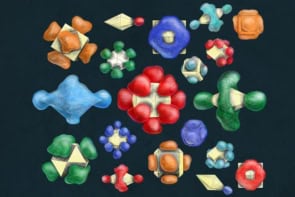Physicists from the UK and the US have come up an explanation for the unusual conducting properties observed in carbon nanotubes. Stefano Sanvito from Lancaster University in the UK and co-workers have discovered that defects and quantum interactions between the different carbon layers in multiwall nanotubes block some of the conductance channels in the tubes. Their results explain the unexpected conductance values measured in recent experiments (Phys. Rev. Lett. 84 1974).
The quantum of conductance, G0, is defined by a simple equation: G0=2e2/h, where e is the charge on the electron and h is the Planck constant. The conductance of an individual nanotube is predicted to be 2G0, but experiments on multiwall nanotubes have measured odd multiples of G0 and, in some cases, fractional values. Sanvito and co-workers have carefully analyzed these experiments, in which Walt de Heer of Georgia Tech in the US and co-workers connected a multiwall nanotube to the gold tip of a scanning tunnelling microscope and immersed it in liquid mercury. When the tube touched the mercury, a circuit was formed that allowed precise conduction experiments to be made.
According to Sanvito and co-workers, the data can only be explained if two experimental conditions occur. First, the current must only be injected from the gold tip to the outermost layer of the nanotube. Second, the number of carbon layers in contact with the mercury must depend on the immersion depth. They find that fractional conductance can occur in multiwall nanotubes due to interwall interactions that modify the electron density of states near the Fermi level, and due to inhomogenities in the nanotubes.



